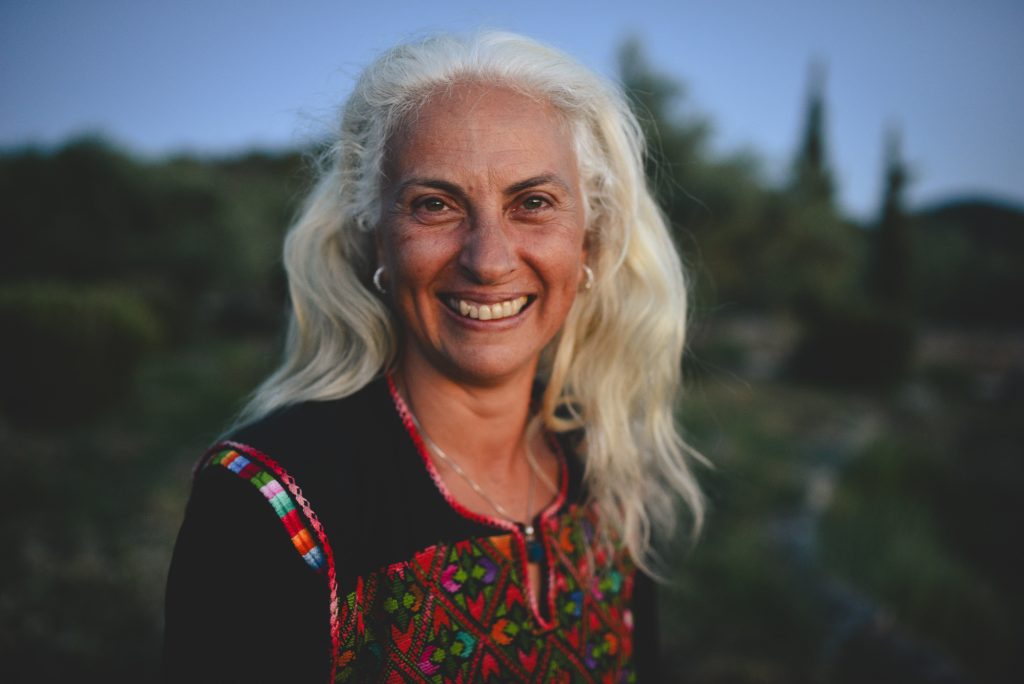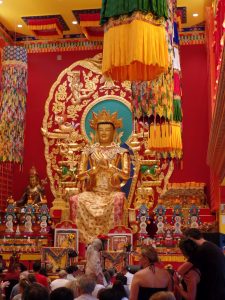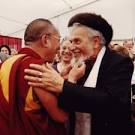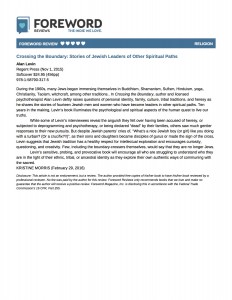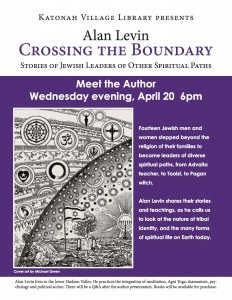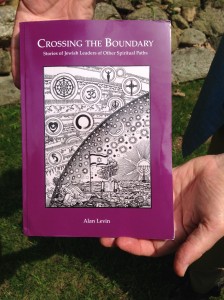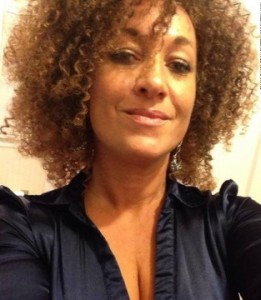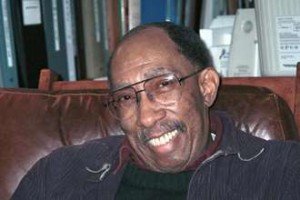I begin with an apology to wolves and wolf lovers (like myself) for using their name as a symbol of vicious, hateful creatures. Wolves have been mischaracterized in this way in a long line of fairy tales, literature and folklore as symbols of what is dangerous and threatening to us. So I ask forgiveness from the noble Wolf Spirit for the use of this old image and suggest you see this link to help undo how humans have made wolves an endangered species. What I’m talking about here are anti-Semites, racists, Muslim-bashers, etc. They are vicious and dangerous, and they evoke great fear in the communities they threaten who have to wrestle with knowing real threats from imagined ones.
For centuries, especially in Europe, the extremely negative stereotyping and hatred projected at Jews was mirrored by a basic sense within the Jewish community: “Don’t trust the Gentiles.” This dynamic boxed Jewish people into literal and psychological ghettos; feelings of being separate and fearful of others were a major aspect of Jewish identity. My baby-boomer generation witnessed a radical reduction of anti-Jewish prejudice as the anti-Semitism some of us experienced in childhood now seems rare.
When I interviewed fourteen spiritual teachers for Crossing the Boundary: Stories of Jewish Leaders of Other Spiritual Paths, they shared varying accounts of confronting anti-Semitism in their youth. But they mostly observed that it was far worse for their parent’s generation and they believed it was becoming a thing of the past. Jews in the U.S., except for the ultra-Orthodox (Haredim), have enjoyed assimilation into the “White” majority mainstream of Americans. This is true whether or not they maintain Jewish religious practices and whether or not they maintain a strong Jewish cultural identity.
But now, coming from two different directions, this feeling of safety for Jews in the (White) American world is being shaken. First: recent news accounts, especially frequent in Jewish publications, have noted an alarming increase in the overt expression of Jew-hatred along with threats of violence. This very old form of anti-Semitism has come up through the gates of hell where it has festered in the darker pockets of America. It’s been liberated and emboldened by the campaign of Donald Trump. Though Trump certainly didn’t create it, his rhetoric and style sent signals to those who lived in the shadows of their own bigoted belief systems, freeing them to emerge onto the public stage, especially on social media. In just the past few days, numerous journalists and radio commentators have shared accounts of the vitriolic anti-Semitic messages and threats they are receiving. (See links below). This is scary stuff and it won’t simply go away after the election.
The second concern about anti-Semitism has been strongly fueled by alarms sounded by many Jewish “leaders” and publications. From their lens, critics of Israel are, in fact, critics of the Jewish people; anger at Israel equals anger at Jews. The more strongly the expressed criticism of Israel, the more they are seen as anti-Jewish. The debate over this, especially within the Jewish community, is ongoing and fierce (more links below). Young Jews especially are playing an increasingly significant role in the fight for Palestinian rights, against the Occupation, and challenging the morality of calling Israel a “Jewish State” as opposed to a “State of all its people.” The fact that these young people are Jews might seem to contradict the argument that Israel-critics are anti-Semites. But instead it heightens the anxiety and reaction in much of the Jewish community. From the point of view of Jews who identify Israel with the Jewish people, young Jews criticizing Israel is evidence that the wolves have kidnapped their children and turned them against their own people. With loyalty to Israel so bonded with the sense of Jewish identity, the rising tide of world-wide condemnation of Israeli policy is felt by many Jews as wolves at the door.
In my opinion, the fears and charges of anti-Semitism regarding critics of Israel are a largely disingenuous attempt to defend the indefensible behavior of the Israeli government towards its Palestinian citizens and those it holds under military occupation. Legitimate protests, calls for non-violent boycott, attempts to call attention to the daily violence and humiliation of a captive people, (which violates the most fundamental values of Judaism and the long history of Jewish humanist thought) cannot with any integrity be called anti-Semitic.
None of that is meant to minimize the reality of anti-Semitism which continues within a vocal segment of the U.S. and may reveal feelings hidden in the larger population. This may be as good a time as any for us all to look deeply at what remains of the centuries-long conditioned misperception through which especially Europeans and their descendants have regarded the Jewish people. Cultural programming is multi-generational and embodied in ways that defy easy undoing. The most overt forms of prejudice may be reduced through a liberal education. But, to use the example of racism: the more subtle forms of it arise out of the visceral and unconscious feelings of “well-meaning” White people and don’t go away without deeper processing. “Undoing White-liberal-racism” workshops and trainings have helped me in this regard to face and deal with my own prejudices.
It seems true that racism, which imprisons us in the belief that people of color are inferior in fundamental ways, infects the minds of everyone, Black and White, until it is made conscious and transformed. It is likewise pretty much impossible to escape the long history of hostile beliefs about Jews. Opinions vary, but in my view, the primary integrating feature of the Jewish stereotype is that they/we are morally corrupt (if not downright evil). It is not that difficult to imagine the next stage of this idea, seeing it as necessary to protect the larger population from contamination with that evil. The fear of this, understandably, runs deep in the identity of Jewish people and for some it is the primary emotional bond of that identification.
However, the reckoning with anti-Semitism is made complicated and more difficult when accusations of anti-Semitism continue to be leveled at people who are expressing their opinions and taking action regarding the behavior of the nation-state of Israel. We all need to distinguish between these two perceived threats to the Jewish community and understand the distorted view of one and the real danger of the other. We also must recognize that the chorus of hatred is rarely only about Jews, but rather (as with the Nazis) may include Catholics, Gypsies, Gays, the disabled. In the current American context it is much more about Muslims, Blacks, Latinos, LGBT people, and yes, women, than it is about Jews.
The mentality of the alt-right wing of the “support Trump” movement is the same Nazi, neo-Nazi, White-supremacist network that has been around for a very long time, most likely with roots in the earliest humans. It’s the fear of the “other” focused into hatred and violence. With some honest introspection, we can see that It is a meme existing in us all, requiring our direct attention if we hope to be part of building a just and free society. We are, after all, one human family, including our most truculent brothers and sisters.
Please read some of these hair-raising accounts documenting the recent rise in anti-Semitism associated with Trump supporters:
“Twitters Anti-Semitism Problem” by Ryan Lizza from the New Yorker
The Tide of Hate Directed Against Jewish Journalists by Emma Green from The Atlantic
Anti-Semitic Posts, Many From Trump Supporters, Surge on Twitter By Jonathan Mahler from the New York Times
Passing as a Non-Jew Has Been Easy for Me — Until Now, by March Daalder from The Forward
For more on the debate within the Jewish community regarding anti-Semitism as it relates to condemnations of Israeli policy, see:
Crying Wolf on Campus anti-Semitism: The Vassar College Talk Was No Blood Libel by Mira Sucharov in Haaretz
US Jews adopted ‘deferential’ relationship to Israel, and tabooed dissent so as to preserve US gov’t support by Phillip Weiss
Occupation denial is pushing me out of my Jewish community by Jenn Pollan
The Truth About Anti-Semitism on Campus — It’s Not All About Israel by Sam Kestenbaum in The Forward
For an Israeli peace activist view of the Jewish identification with Israel, see:
It Can Happen Here by Uri Avnery
